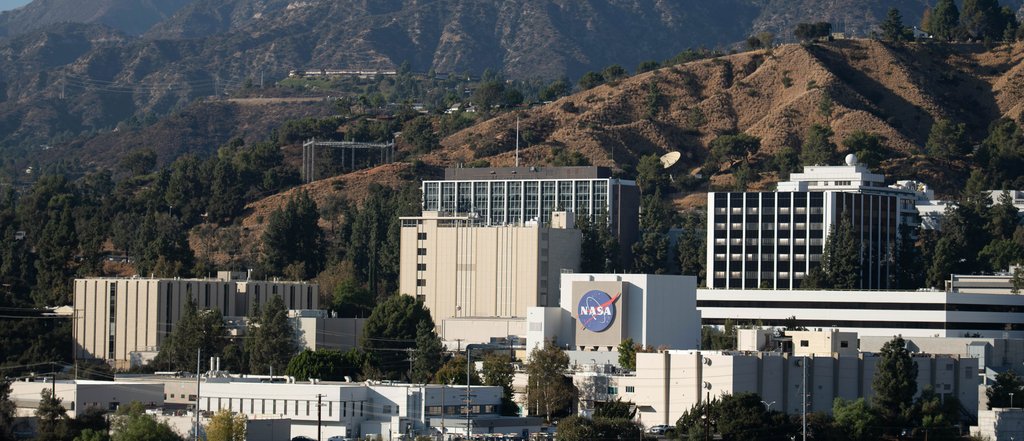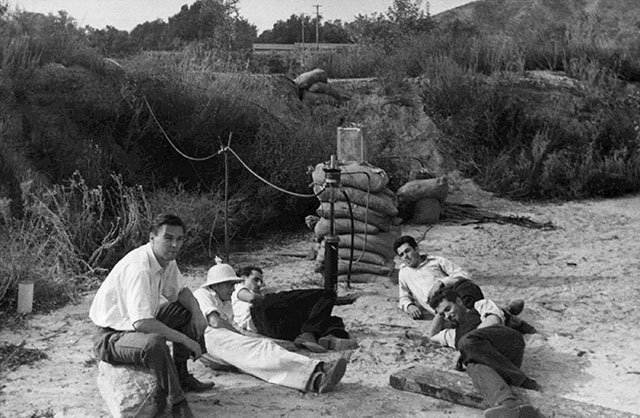
Who We Are
The Jet Propulsion Laboratory holds a unique place in the universe. We are a leader in robotic space exploration, sending rovers to Mars, probes into the farthest reaches of the solar system, and satellites to advance understanding of our home planet.

JPL's workforce includes a dedicated and diverse population of scientists, engineers, technologists, developers, communicators, designers, safety experts, business administrators, and more.
The success of JPL’s first spacecraft, the Explorer I satellite, in 1958 helped lift America into the Space Age. Our spacecraft have flown to every planet in the solar system, the Sun, and into interstellar space in a quest to better understand the origins of the universe, and of life. Our missions honor the relentless pursuit of the seeker: Voyager, Curiosity, Cassini, Galileo.
It was a camera on Voyager 1 that captured the pale blue dot of Earth from 3.7 billion miles away and corrective optics engineered by JPL that brought the Hubble Space Telescope into focus. JPL helped build and manages one of the four cameras aboard the James Webb Space Telescope. In fact, the image sensors used in modern digital cameras, including your smartphone’s, were developed at JPL, too.
Closer to home, JPL spacecraft, science instruments, and airborne missions help humanity study and track climate change, manage natural resources, and respond to disasters. And the giant dish antennas of NASA’s Deep Space Network – built and managed by JPL – send and receive data from nearly all spacecraft traveling beyond the Moon.
What’s next? We’re working on missions to investigate the surface and interior of Venus and to study the ocean deep below the icy crust of Jupiter’s moon Europa. JPL is taking part in missions to map Earth’s surface and to chart minute movements of the planet’s ice and land-covered surfaces. Together with the European Space Agency, we plan to bring Martian rock samples back to Earth in the search for past signs of microscopic life on Mars, and those efforts will also help NASA prepare to send humans to Mars.
From Earth to the solar system to the limits of our universe, we drive to the forefront of scientific discovery; we benefit humanity through our missions, innovations, and research, inviting people everywhere to imagine what is possible.
Managed by Caltech, JPL is NASA’s only federally-funded research and development center.
VIEW A LIST OF JPL FIRSTS
Facts about JPL
- Designed, built, and operated the United States’ first satellite, Explorer 1, launched in 1958. Explorer 1 produced the first-ever scientific result from space: the discovery of the Van Allen Radiation Belts.
- Explored all the solar system’s planets, from Mercury to Neptune.
- Developed and operated the first rotorcraft ever sent to another planet.
- Designed, built and operated all five of the successful rovers sent so far to the surface of Mars.
- In Earth science, pioneered radar scatterometry for ocean surface wind measurements, radar altimetry for sea surface height, synthetic aperture radar for natural hazard and solid earth applications, gravity measurements to characterize Earth’s cryosphere and water cycle, and a number of spectrometer advances for atmospheric sounding and land surface measurements.
- Led development of space-based infrared astronomy with such missions as the Infrared Astronomical Satellite, the Spitzer Space Telescope, and the Mid-Infrared Instrument on the James Webb Space Telescope.
- Developing technology projects such as advanced atmosphere entry systems, advanced detectors for a wide variety of airborne and spaceborne instruments, laser communications, cubesat-based investigations, and robotic technologies for both autonomous operation and use by human explorers.
- The Laboratory’s core capability is to integrate science, engineering and technology that provide end-to end implementation of space missions, through either use of its in-house experienced workforce or in collaborations with industry and academia.
- JPL also applies its capabilities to national security in areas synergistic with its work for NASA, and develops technologies for uses on Earth in fields from public safety to medicine, capitalizing on NASA’s investment in space technology.
- Operates the NASA Deep Space Network, enabling navigation and data return throughout the solar system.
- 40 currently active missions.
- Annual budget for fiscal year 2021 $2.4 billion.
- Approximately 5,500 employees and on-site subcontractors at a 168-acre facility in the foothills of the San Gabriel Mountains near Pasadena, California.
Tom Hoffman, InSight Project Manager, NASA JPL, left, and Sue Smrekar, InSight deputy principal investigator, NASA JPL, react after receiving confirmation that the Mars InSight lander successfully touched down on the surface of Mars, Monday, Nov. 26, 2018 inside the Mission Support Area at NASA's Jet Propulsion Laboratory in Pasadena, California. InSight, short for Interior Exploration using Seismic Investigations, Geodesy and Heat Transport, is a Mars lander designed to study the "inner space" of Mars: its crust, mantle, and core. Photo Credit: (NASA/Bill Ingalls)
Far better it is to dare mighty things, to win glorious triumphs, even though checkered by failure ... than to take rank with those poor spirits who neither enjoy nor suffer much, because they live in the gray twilight that knows neither victory nor defeat.
The Roots of JPL
We don't make jets or rockets, so why are we called the Jet Propulsion Laboratory?

The GALCIT rocketeers taking a break from setting up their experimental rocket motor in the Arroyo Seco. Left to right: Rudolph Schott, Apollo M. O. Smith, Frank Malina, Edward Forman, Jack Parsons.
It all started in the 1930s in Pasadena, California, when a group of Caltech graduate students and amateur rocket enthusiasts began experimenting with rocket motors. Unable to test the motors at Caltech due to risk of fires or explosions, they set up in the Arroyo Seco, a mostly dry wash on Pasadena’s west border. As global tensions rose before World War 2, their rocket tests caught the attention of the U.S. Army, which began sponsoring development of rocket technology and missile systems.
After the war, interest in space exploration spawned a rivalry between the U.S. and the Soviet Union. When the Soviets launched their Sputnik satellite into Earth orbit in October 1957, the Space Race heated up. To catch up, JPL built Explorer 1, which launched in January 1958 and became the first American Earth-orbiting satellite. Later that year, NASA (the National Aeronautics and Space Administration) was founded, and JPL was transferred to the agency by the Army. Since then, JPL has abandoned rocket development for space exploration, but remained under management by Caltech, which is several miles away in Pasadena. And the rest...is space history.
Tour JPL: Go to https://www.jpl.nasa.gov/events/tours/ for information on booking in-person and virtual tours.
Work at JPL: We support the economy of Southern California with more than 5,500 full-time positions. Browse https://jpl.jobs/ for career opportunities and internships.
Learn more: Visit jpl.nasa.gov.
Historic timeline: Explore our interactive timeline to learn how JPL has been reaching for the stars since 1939.

